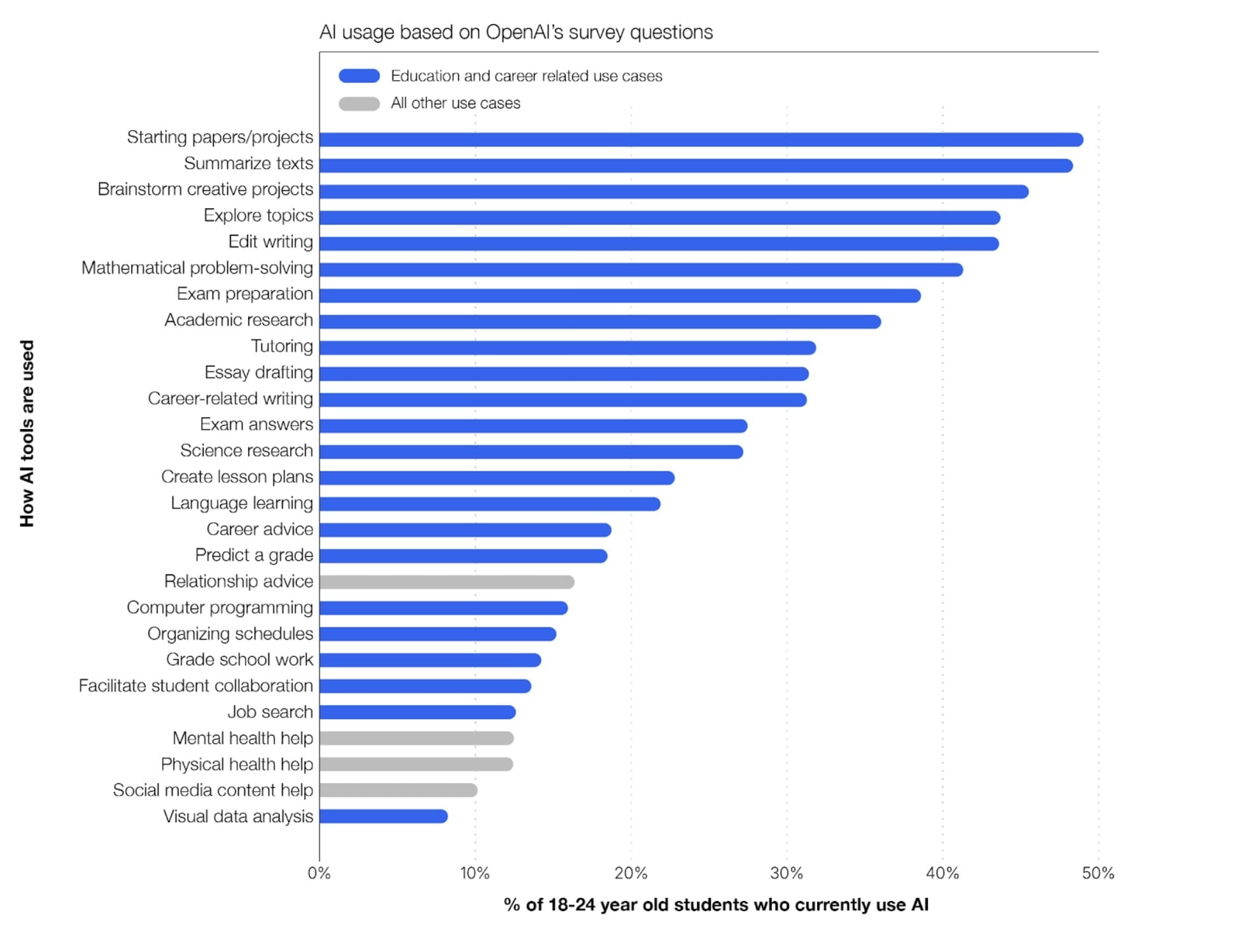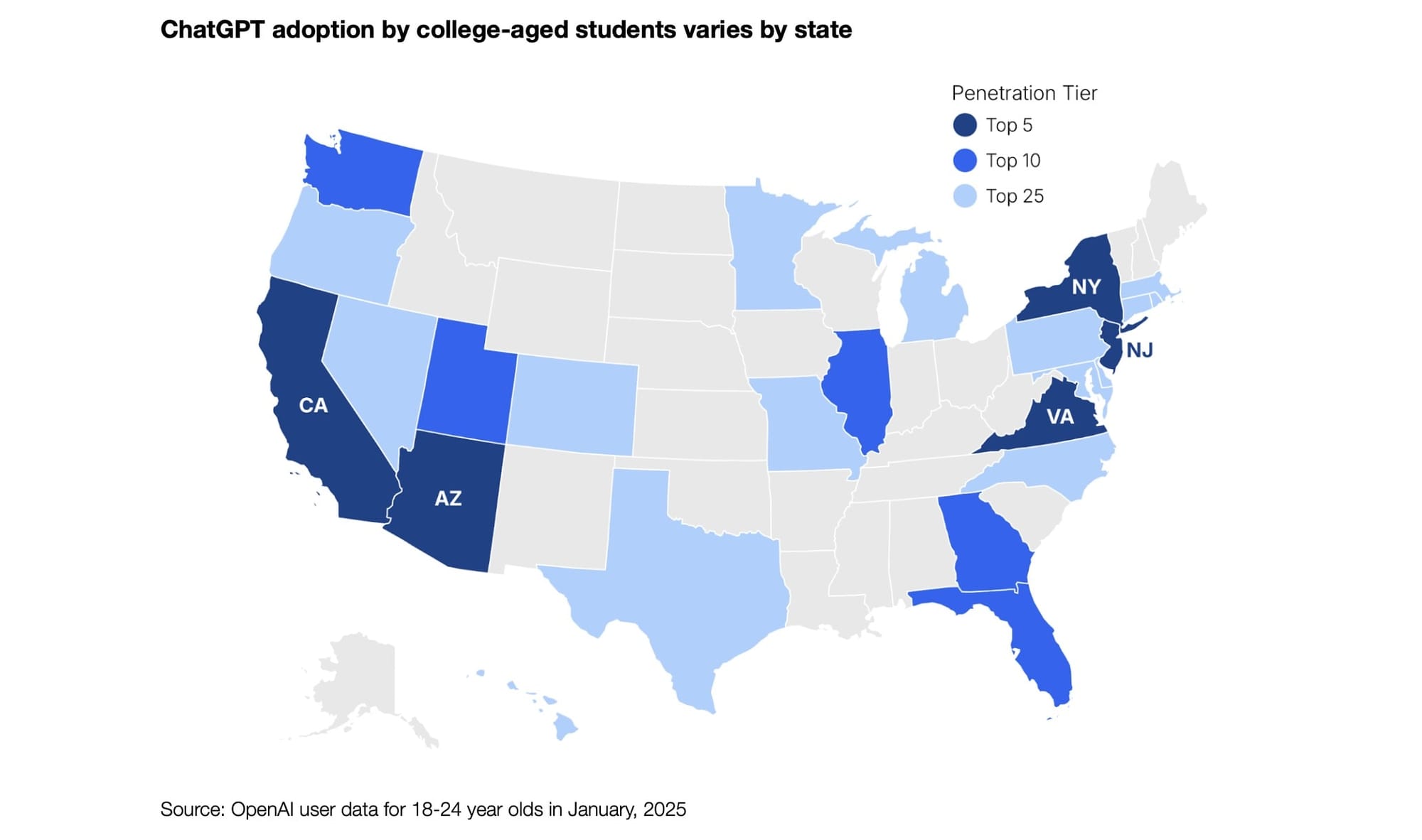
College students aren’t waiting for institutions to catch up with AI—they’re taking matters into their own hands. OpenAI’s latest report on ChatGPT adoption among US college students reveals that over a third of students aged 18-24 actively use the tool, often for learning-related tasks like starting papers, brainstorming, and programming support. But the report also highlights a stark gap in AI literacy across states, raising concerns about workforce readiness. Here are the seven most important takeaways:
1. Over a Third of College Students Use ChatGPT, Primarily for Learning
Among many college-aged users, ChatGPT is more than just a chatbot—it’s an invaluable study tool. According to OpenAI’s data, over one-third of students aged 18-24 in the US use ChatGPT, with over 25% of their messages being learning-related.

2. AI Adoption Varies Significantly by State
Not all states are embracing AI at the same rate. The highest adoption rates are in California, Virginia, New Jersey, and New York. Meanwhile, states like Wyoming, Alaska, Montana, and West Virginia report significantly lower usage. This variation could lead to disparities in AI fluency, ultimately impacting workforce competitiveness across states.

3. Students Are Learning AI on Their Own
Despite widespread interest, most colleges aren’t offering formal AI training. OpenAI’s survey found that while 75% of students want AI education, only 25% of institutions currently provide it. As a result, many students are self-teaching AI skills, often sharing knowledge informally with peers.
4. Employers Prioritize AI Skills Over Experience
AI proficiency is quickly becoming a key hiring factor. According to the report, over 70% of employers say they would hire a less experienced candidate with AI skills over a more experienced one without them. With AI rapidly being integrated into many business operations, students without exposure to these tools risk falling behind in the job market.
5. AI Literacy Could Impact Economic Competitiveness
States with lower AI adoption rates may face long-term economic challenges. As AI literacy becomes a key factor in job readiness and productivity, workforce disparities could lead to differences in economic development. OpenAI warns that states with limited AI adoption risk losing out on high-value job opportunities.
6. AI is Boosting Learning Engagement and Productivity
Beyond job readiness, AI is also improving learning outcomes. A recent Harvard study found that students using AI-assisted tools in a physics course doubled their engagement and improved problem-solving skills. Similarly, a joint Stanford-MIT study showed that AI tools can boost worker productivity by up to 15%, with even greater benefits for those with less prior experience.
7. We Need AI Literacy and Workforce Policies
The report encourages the development of a nationwide AI education strategy—rooted in local communities and supported by American companies—to help equip students and the workforce with AI skills. It outlines several policy recommendations to make AI training more accessible and affordable, including:
- Expanding 529 savings plans to cover AI-focused apprenticeships.
- Establishing AI literacy frameworks similar to ISTE Standards for schools.
- Encouraging public-private partnerships to create AI training pipelines.
As AI continues to reshape education and employment, ensuring equitable access to these tools will be critical. OpenAI’s findings highlight the urgent need for colleges, policymakers, and employers to close the AI literacy gap before it widens further.

